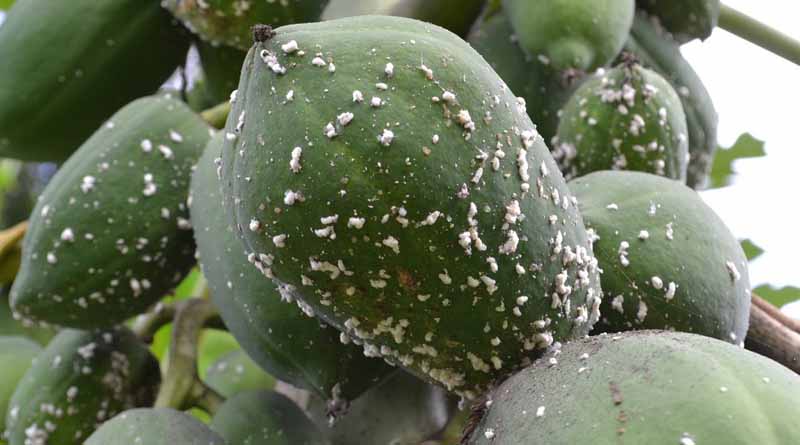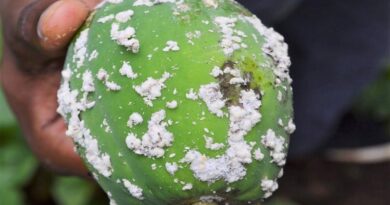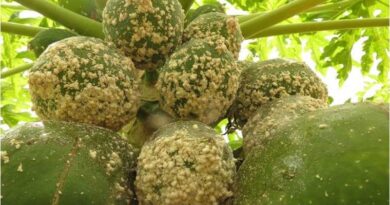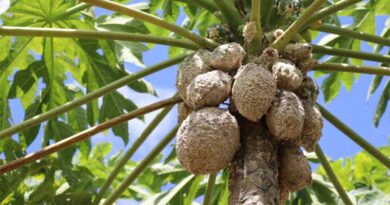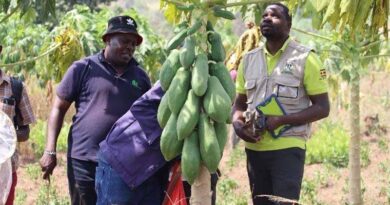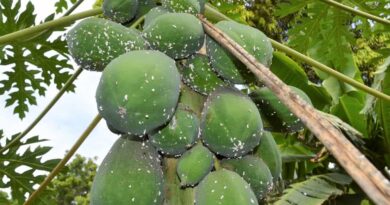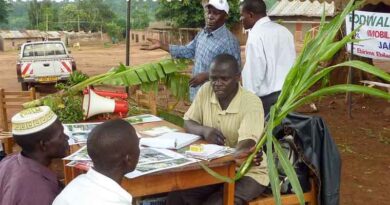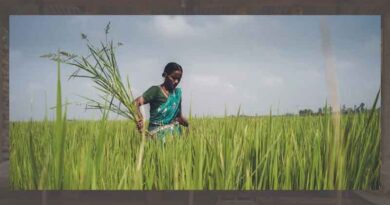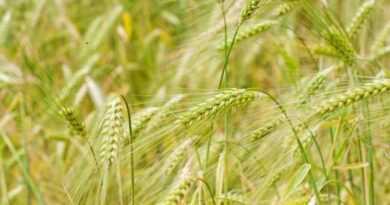Fight against papaya mealybug in Kenya stepped up with agent release in four more counties
18 July 2023, Kenya: The fight against the devastating papaya mealybug (Paracoccus marginatus) in Kenya is being stepped up with the release of a natural enemy – Acerophagus papayae – in four more counties that run the risk of being blighted by the pest.
CABI, together with colleagues from the Kenya Agricultural and Livestock Research Organisation (KALRO), the National Museums of Kenya and Kenya Plant Health Inspectorate Services (KEPHIS), are preparing to unleash A. papayae against the papaya mealybug in Machakos, Makueni, Tharaka Nthi and Embu. A. papayae is a small parasitic wasp that only attacks the papaya mealybug by laying eggs on the pest.
It is hoped that future releases will also be able to be carried out in Meru, Murang’a, Kitui, Homabay, Busia and Baringo – thereby covering all 10 of the major papaya growing counties in Kenya.
The work is being carried out by CABI’s invasive species experts based at its Regional Centre for Africa in Nairobi as part of work under the CABI-led global PlantwisePlus programme.
Papaya mealybug is a serious pest of papaya fruit, which originated from Central America before spreading to the Caribbean and South America in the 1990s. The pest was first detected in Africa in 2010 in Ghana and in Mombasa County, Kenya, in 2016.
CABI researchers found that more than half of Kenya has been invaded by papaya mealybug and its impact has led some papaya farmers abandoning farming the fruit altogether. CABI, KALRO and KEPHIS have seen crop losses ranging from 53-100% and economic losses of £2,224/ha annually.
However, A. papayae offers a classical biological control remedy for the papaya mealybug pest. This reduces the overreliance on more harmful to use and more damaging for the environment pesticides – as part of an Integrated Pest Management (IPM) plan.
Before the release, the performance of A. papayae had been evaluated under laboratory conditions for its efficiency as a potential agent for use.
Laboratory parasitism of 77.5%, 72.5% and 47.5% in adult females, third and second instars respectively was obtained. Consequently, a dossier on the laboratory performance of the parasitoid and formal application for field release was presented to the Kenya Standing Committee on Imports and Exports for consideration before approval was granted.
Dr Ivan Rwomushana, Senior Scientist, Invasive Species Management at CABI, said, “The papaya mealybug is a significant pest which can devastate a whole crop if left unmanaged. This not only has a severe impact on the livelihood of a smallholder farmer but also the ability to contribute to local, national and global food security.
“It is hoped that following the releases of A. papayae, Natural Enemies Field Reservoir (NERF) technology, pioneered by the late CABI scientist Riaz Mahmood in Pakistan, will also prove fruitful in mass-rearing the parasitoid against papaya mealybug in Kenya.”
NEFRs used in Pakistan as part of a separate USAID-funded Phytosanitary Risk Management programme in Sindh, Balochistan, Gilgit and Skardu where the conservation of important biocontrol agents of papaya mealy bug, apple pests, fruit flies and the giant mealy bug are being carried out.
Under the release programme for A. papayae, CABI is working with KEPHIS and KALRO to increase awareness about the classical biocontrol of papaya mealybug and build the capacity of farmers, extension officers, researchers, input suppliers and policymakers to manage the pest.
Furthermore, CABI is training and helping farmers to establish NEFRs in farmers’ fields that would act as a natural home for the Acerophagus papayae parasitoid at the farmers’ fields and help in conservation of the parasitoids in communities when the project ends.
Also Read: PAU issues fresh advisory for control of Pink Bollworm in Cotton
(For Latest Agriculture News & Updates, follow Krishak Jagat on Google News)

